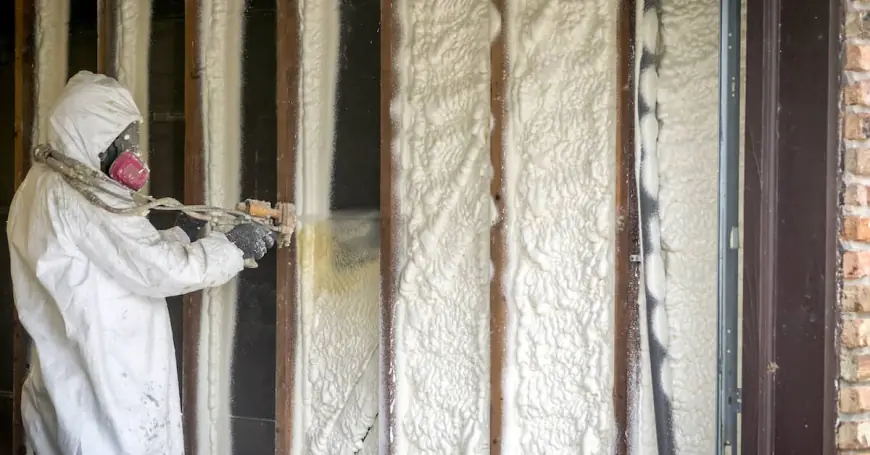How Interior Insulation Helps with Noise Reduction and Energy Savings

If the sound of traffic, barking dogs, or late-night TV from the next room makes you want to put a pillow over your head, interior insulation might be the upgrade you’ve been avoiding. Beyond blocking noise, it also helps cut down on those energy bills that creep higher every season.
Think of it this way: your walls aren’t just walls—they’re barriers that can either work for you or against you. The right insulation makes your space quieter, cozier, and less expensive to heat or cool. Let’s break down how it works and why it matters for both homes and commercial buildings.
How Insulation Blocks Unwanted Noise
Noise reduction is one of the most overlooked benefits of expert interior insulation services. Many people think insulation is only about temperature, but its density and placement also affect how sound travels.
Soundproofing Effect of Interior Insulation
Insulation adds density to walls, ceilings, and floors, creating barriers that sound waves struggle to pass through. Fiberglass, mineral wool, and spray foam are often used because they trap air pockets that disrupt vibration and echo.
Common Noise Problems Insulation Can Solve
-
Street traffic noise seeping into living spaces
-
Office distractions caused by shared walls
-
Footsteps and voices between multi-level floors
-
Mechanical sounds from HVAC systems or pipes
Fun Fact: The human ear can pick up sounds as low as 0 decibels. A single layer of insulation can reduce noise by up to 10–15 decibels, making a noticeable difference in daily comfort.
Why Insulation Improves Energy Efficiency
Energy savings are often the first reason people invest in insulation, and for good reason. Poorly insulated walls and ceilings act like open windows, letting conditioned air escape and outside temperatures creep in.
How Insulation Controls Heat Transfer
Insulation works by slowing down heat flow through conduction, convection, and radiation. The thicker and denser the insulation layer, the less energy is needed to keep rooms warm in the winter and cool in the summer.
Energy Savings Over Time
Energy-efficient buildings use less heating and cooling, which directly lowers monthly bills. Over a year, well-insulated homes and businesses can save up to 15–25% on energy use.
Fun Fact: The U.S. Department of Energy estimates that heating and cooling account for nearly half of the average home’s energy use—meaning insulation impacts the biggest chunk of the bill.
Comparing Insulation Types for Noise and Energy Benefits
Not all insulation materials perform equally. Some are better for soundproofing, while others excel at thermal performance. The choice depends on whether the goal is comfort, cost savings, or both.
Choosing the Right Balance
-
For offices or apartments, mineral wool offers strong acoustic benefits.
-
For older homes with leaks, spray foam seals gaps and maximizes efficiency.
-
For general residential upgrades, fiberglass batts provide a cost-effective balance.
How Insulation Benefits Both Homes and Commercial Spaces
Whether it’s a single-family home or a busy office, interior insulation makes daily life more comfortable and productive.
Residential Benefits
Homeowners notice fewer temperature swings and less outside noise. Bedrooms stay quieter, and heating or cooling systems run less often. Families also appreciate better indoor air quality since insulation helps reduce drafts and dust.
Commercial Benefits
Workplaces benefit from improved focus and reduced distractions. A well-insulated office or store stays quieter, which creates a more professional environment. It also lowers operating costs since large buildings typically consume more energy.
Common Question: Can Insulation Alone Solve Noise and Energy Problems?
Insulation makes a huge difference, but it isn’t a magic fix-all. For maximum results, it should be paired with other improvements like sealing gaps around doors and windows, using double-glazed glass, or upgrading HVAC systems. Still, insulation is often the most cost-effective first step because it addresses both noise and energy loss at the same time.
Conclusion
Interior insulation does more than keep a building warm—it creates a quieter, more energy-efficient environment. By slowing heat transfer and blocking sound waves, insulation turns ordinary walls into functional shields against discomfort and waste.
For homeowners, the payoff is a peaceful, comfortable home with lower utility bills. For commercial spaces, the result is better working conditions and reduced energy expenses. Whether the priority is quiet nights or smaller energy statements, choosing a trusted spray foam insulation company offers a practical solution that delivers both.
FAQs
Does insulation really make a noticeable difference in noise reduction?
Yes. Insulation reduces sound transmission by adding density and absorbing vibrations. Depending on the material, it can cut noise levels by 10–20 decibels.
Which insulation is best for soundproofing walls?
Mineral wool is often preferred because of its high density and sound-absorbing qualities. It outperforms fiberglass for noise control.
Will new insulation lower energy bills right away?
In most cases, yes. Proper insulation reduces heating and cooling needs, so energy savings start with the first billing cycle after installation.
Can insulation help in older homes without major renovations?
Yes. Blow-in cellulose or spray foam can be installed in existing walls without tearing them down, making it a strong option for retrofits.
Is one type of insulation enough for both noise and energy efficiency?
Some materials, like mineral wool and spray foam, balance both functions well. The right choice depends on whether sound or energy performance is the bigger priority.
Reviewer: Maria Lopez reviewed the article and brought 12 years of insulation industry experience to improve the guidance. Practical tips were added, and the content was made clearer and more useful for contractors working in the field every day.
What's Your Reaction?
 Like
0
Like
0
 Dislike
0
Dislike
0
 Love
0
Love
0
 Funny
0
Funny
0
 Angry
0
Angry
0
 Sad
0
Sad
0
 Wow
0
Wow
0




















































